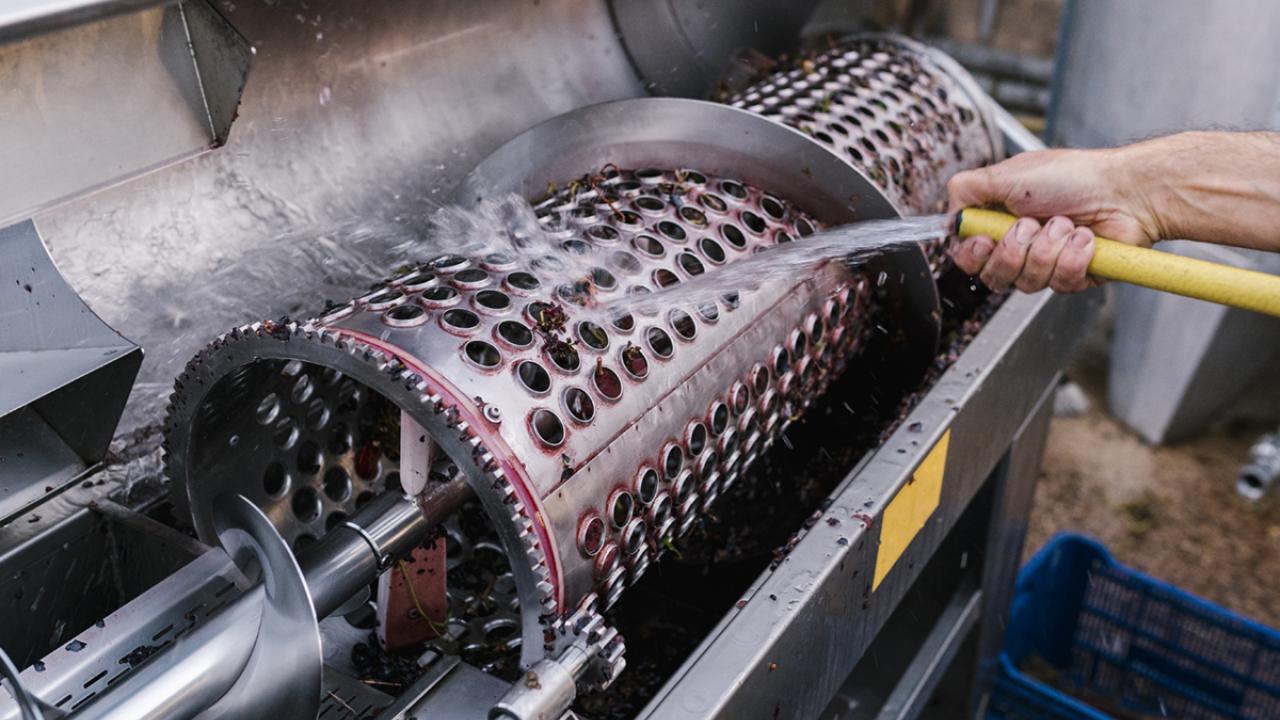
Cleaning and Sanitation in Winemaking
Why is sanitation important in winemaking? Sanitation and cleaning directly impact the quality of your wine, making them the most important aspects of quality control in winemaking. In addition, winery sanitation helps avoid cross contamination and minimizes the microbial load within the winery itself.
Whether you’re a home or small-scale winemaker or a large commercial operation, investing in an effective cleaning and sanitation program is essential to the quality and safety of your wine – and your bottom line. We spoke with Leticia Chacon-Rodriguez, winemaker/winery manager for the Viticulture and Enology Department at UC Davis and instructor of the CPE winemaking courses on wine filtration, step-by-step winemaking, home winemaking, wine microbiology and more, for an overview on cleaning and sanitation measures that all winemakers should consider before beginning their next batch.
Know Your Terms
A good first step to ensuring an effective winery cleaning and sanitation program is to understand the definitions of the various phases involved.
Cleaning
This is the first step in your process. It involves removing debris—leaves, stems, dirt, nutrients and other visible particles—to eliminate potential contaminant growth and a non-chlorinated clean water pre-rinse, followed by the application of a cleaning agent and a then a non-chlorinated clean water rinse. Winery and vineyard equipment should be cleaned immediately after each use.
Sanitizing
This step reduces the number of viable microbes (kills about 99%) and should always be done after cleaning because you can’t sanitize a dirty surface. Remember to rinse with chlorine free water or a citric acid solution after cleaning and before sanitation. Depending on the sanitizer used, a final rinse may also be needed.
Sterilizing
This removes all microbes and viable cells and leaves no pathogen alive and zero contamination (kills nearly 100%).
Be on the Lookout
There are certain surfaces in the winemaking process that are prone to build-up of harmful microorganisms. Pay special attention to these areas in your winery cleaning and sanitation program:
Interested in learning more?
We offer a variety of one and two-day winemaking and vineyard management courses that explore a variety of topics in depth to help ensure your wine quality is top shelf. Check out all of our available courses.
- Grapes and vineyard equipment
- Juice standing in any equipment
- Used barrels
- Wine from other locations or countries
- Difficult-to-reach areas in your winemaking equipment
- Fruit flies, which can carry spoilage organisms to your entire winery
- Sampler or wine thief, which if not sanitized, can cross-contaminate wine lots
- Hoses, buckets, brutes, staves and other equipment
Remember These Basic Rules
There is much to learn when it comes to ensuring a proper and effective cleaning and sanitation program for your winery. Having winery personnel dedicated to developing a multi-step Sanitation Standard Operating Procedure, ensuring adherence to it and choosing the correct chemicals for cleaning and sanitation are essential. There are also a few basic rules that everyone involved in your winemaking operation should be aware of.
- Clean and sanitize everything before use.
- Clean everything after use.
- Clean the winery premises (not just the equipment) regularly.
- Keep the winery free of clutter.
- Watch for pests, including bacteria, mold, wild yeast and rodents.
- Deal with grape pomace (skins, pulp, seeds, stems) immediately.
